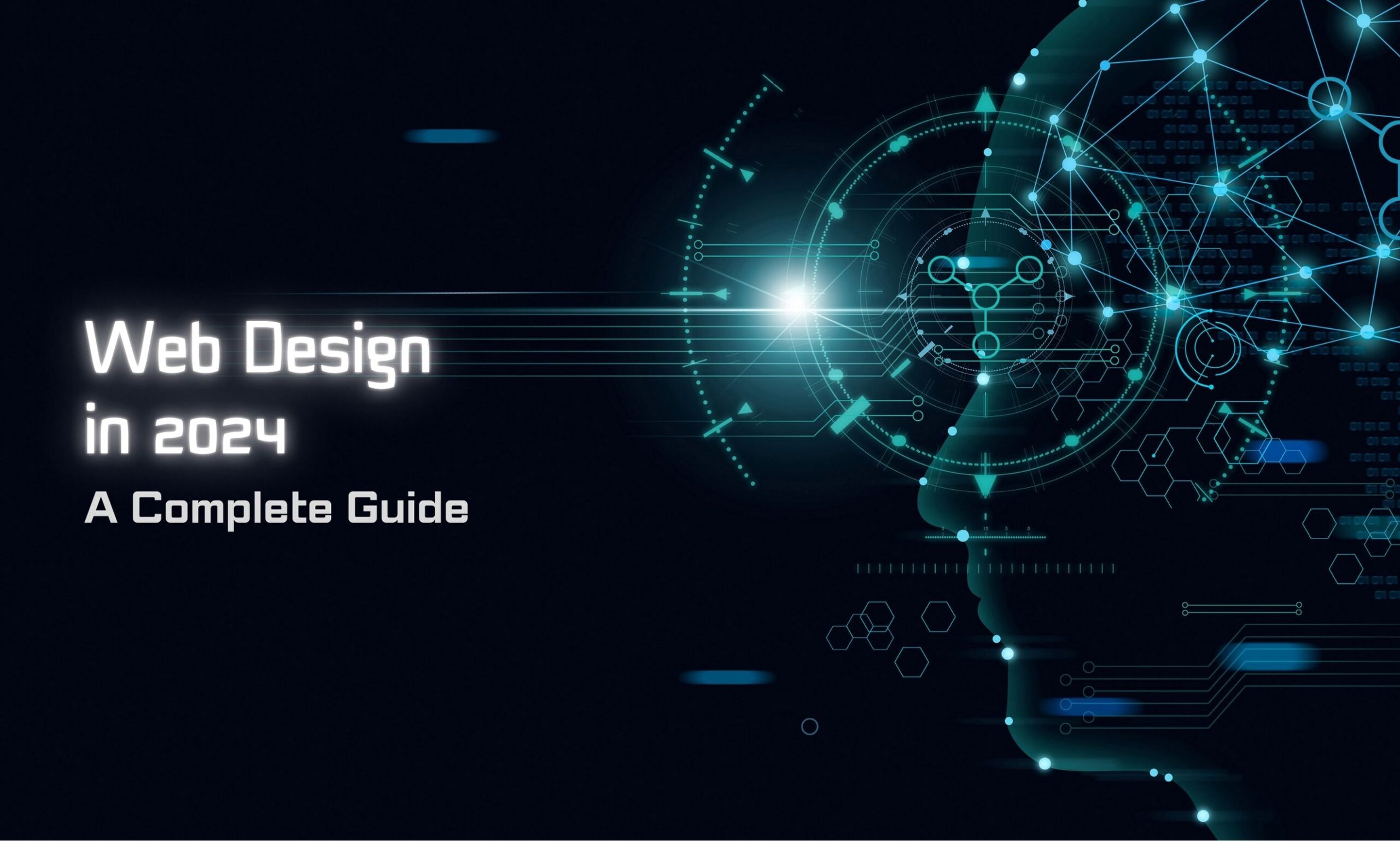There are many benefits to having a website in 2024. Whether it is to maintain a strong online presence or establish credibility and trust, a website can help you achieve both. It will even help your business expand its reach to a wider audience and convert them into paying customers.
But, to do that, it first needs to be designed well. A poorly designed website can be disastrous for your business. It will lead to
- High Bounce Rate as visitors will quickly leave a website that feels confusing, slow, or visually unappealing. Your business will lose all the opportunities to get more sales and conversions.
- Poor web design can damage your brand and leave a negative impression on the customers, as it can feel frustrating to navigate and find information on a website that is poorly designed.
- A poorly designed website will erode the credibility and trust among potential customers.
- Google penalizes websites that have poor design. They struggle to rank in the search engine, making it difficult to acquire new customers organically.
Bad website design can cost businesses an average of $2,500 per month in lost revenue.
So, good web design is a must if you want your business to thrive in 2024.
Don’t worry! In this blog, I will be sharing some of the latest trends in web design that will help you build a website that is not only visually stunning but also functionally robust.
Trend 1: AI-Driven Personalization
Artificial Intelligence can analyze vast amounts of data, including browsing history, search queries, and purchase behavior. This will help you get a better understanding of your customer’s preferences and needs while designing your website.
Secondly, AI algorithms can also predict what content, layout, and features each customer is more likely to engage with, allowing you to provide customized experiences to them through your website.
Furthermore, Artificial Intelligence can also automate A/B testing for different design elements, quickly identifying the most effective variations for each user segment.
Not only that, it will also adjust website content and layout in real-time based on individual user profiles and behavior, which would include personalized product recommendations, dynamic banners, or even tailored page structures.
You can also add AI’s like Chatbots and Virtual Assistants to your website for personalized support and guidance to customers.
AI-driven personalization offers limitless possibilities for web design.
Trend 2: Augmented Reality (AR)
Augmented reality is gaining popularity in web design.
That’s because customers nowadays prefer to try on clothes virtually or see furniture placed in actual space before purchasing them online. Augmented reality can create interactive 3D product models that users can manipulate and view in their environment. This instills a higher confidence in them to make online purchases, thus reducing the return rates for businesses.
Augmented reality will also allow you to create spatial UIs that respond to the physical environment. This will allow customers to manipulate menus and buttons in 3D space using hand gestures or voice commands, thus creating a more intuitive and natural user experience.
AR will make websites more engaging and interactive and provide personalized experiences to customers.
Trend 3: Minimalism
Minimalism will continue to dominate web design as customers want user-friendliness and quick access to essential information and features while visiting a website. Clean layouts, intuitive navigation, and fast loading times will always remain essential for a great user experience.
Minimalism’s focus on responsiveness and simplicity will remain evergreen due to the ever-increasing use of mobile browsers. Websites nowadays need better usability and be visually appealing across different screen sizes.
Also, animations and micro-interactions can improve user engagement without making customers feel overwhelmed. It adds clarity while also making the website unique from the rest.
Minimalism’s focus on clean lines and white space will continue to influence web design in the future. Carefully chosen fonts and strategic use of negative space will create a sense of sophistication.
Trend 4: Parallax Scrolling
Parallax scrolling involves moving the background content at a different speed than the foreground content. This creates an illusion of depth and adds a dynamic visual experience that enhances storytelling. This design choice can help guide the user’s journey through the website, making it more engaging and interactive.
Parallax scrolling is a popular design concept from a decade ago and is making a comeback in 2024. But it’s not just a simple repeat of the past. This time, it’s revolutionized with modern technology and multimedia elements, creating a more immersive and engaging web experience. With the integration of live content, video, and dynamic imagery, the modern parallax effect turns static pages into captivating narratives. It takes users on an enjoyable visual journey through the website, making their experience not just informative, but also fascinating.

Trend 5: Microinteractions
These are small interactive elements placed on the web pages that respond to users when they click or hover over them. They add a layer of engagement to the User Experience and are subtle at the same time. In 2024, micro interactions will go beyond visual feedback and will become more personalized and contextual. It will adapt to user behavior, likes, and dislikes and create a more immersive experience.
In recent years, many websites have become unnecessarily interactive to the point of creating a bad User Experience(UX). Microinteractions can counter that by creating meaningful interactions for the User that will complement web design and web content. Website audiences do not like super-animated or overly interactive websites, and micro-interactions are a very good alternative in that case. They will make web navigation easier and interesting at the same time.
Trend 6: Kinetic typography
Kinetic typography means ‘moving text.’ Since motion is integrated with text, it’s also labeled as motion typography. And, no, this is not something design experts have pulled out of thin air. Such typography has been around for decades and was first used in Alfred Hitchcock’s 1959 feature film North by Northwest.
There’s no typical way to animate the text. You can play with the lettering anyway, as it can be shrunken, expanded, moved around, changed color, etc. The graphic designer is free to use any creative tricks to convert a simple text into a powerful message that conveys a particular emotion, conjures up ideas, and more.
The biggest plus of modern kinetic typography is its accessibility; anyone can get started. There are umpteen opportunities to develop and deploy visually appealing typography animations thanks to excellent broadband speeds and new and old web design trends.
Trend 7: Neomorphic Design
For a couple of years, designers wished to take a break from skeuomorphism. But not before they took a leaf from this design trend and launched Neumorphism—a mix of ‘new’ and ‘skeuomorphism.’
Neumorphism offers a balance between hyperrealism and minimalism. It brings subtle colors, realistic textures, and soft shadows to digital interfaces. Simply put, it creates a 3D illusion on a flat, 2D interface, helping to display content in a unique way and engage users.
Neumorphic design is now the staple of UI and UX designers and has been used for software, websites, and mobile applications. Its popularity can be solely attributed to its clean and modern look, which adds depth and dimension without overwhelming users.
Moreover, neomorphism can be customized and implemented using different color schemes, empowering website branding and customization.
Trend 8: Micro-animations
Micro animations are tiny animations that mostly appear at the end of micro-interactions. Again, tiny animations don’t mean they are not helpful to the site. They act as useful guides to users as they hover, click, and use the mouse while checking out a product.
Simply put, they involve the user and take content experience to the next level, whether it’s through visual storytelling or content on product pages. Not to mention, they make the site look more playful.
Not surprisingly, e-commerce websites use micro animations to enhance the site’s user experience and give shoppers a better idea of their products.
Now, you must be thinking, how have micro-animations become so popular? The only answer is no-code web development platforms. Such platforms provide pre-coded animations that can easily be added to websites without developers’ help. So, you can add a progress bar or a hover effect without coding knowledge.
Conclusion
The landscape of web design in 2024 offers many exciting opportunities to create websites that not only captivate audiences but also drive business growth.
By embracing the latest trends, such as AI-driven personalization, augmented reality, minimalism, parallax scrolling, and micro-interactions, businesses can craft immersive and engaging digital experiences that resonate with users on a deeper level.
AI-driven personalization enables tailored experiences that cater to individual preferences, while augmented reality enhances product visualization and interaction, boosting customer confidence and reducing return rates.
Minimalism ensures clean and intuitive designs that prioritize essential information and functionality, especially crucial in the mobile-first era.
Meanwhile, the resurgence of parallax scrolling brings a dynamic storytelling element, immersing users in captivating narratives. Microinteractions replace unnecessary animation with meaningful interactions enhancing User Experience.
By leveraging these trends, businesses can distinguish themselves in a crowded online space and foster trust, credibility, and engagement with their target audience. As we continue to evolve in the digital age, embracing these innovative approaches to web design will be key to staying ahead of the curve and driving success in 2024 and beyond.
Lastly, check out GoodFirms’ top web design companies and designers as the web design agencies listed here provide fantastic design services. These experts work with remarkable speed and precision to deliver excellent custom web design solutions.

Disclaimer: Disclaimer: The views and opinions expressed in this article are those of the author and do not necessarily reflect the official policy or position of Digitalz Pro Media & Technologies.




